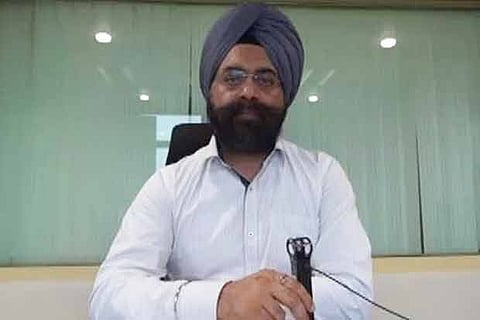

Chennai
In an attempt to find out the reason for this man-made disaster, DT Next visited some of the worst-affected areas like T Nagar, KK Nagar and Kolathur, talking to residents and local activists for the past three weeks. Equipped with the findings, DT Next spoke to Chennai Corporation Commissioner Gagandeep Singh Bedi to find out what the civic body plans to do to find a permanent solution to the perennial problem. Excerpts from the interview with Bedi, a disaster management expert, who led from the front during the 2004 tsunami and Cuddalore floods:
What do you think are the reasons for the flooding that rattled the city for over three weeks?
• The rainfall in November this year was one of the four heaviest rainfall that the city witnessed in 100 years. The impact was very high, almost equivalent to 2015 level rainfall. There were a few pockets where inundation lasted for two to three days. This is because of local terrain and local issues. In my opinion, most of the areas in the city bounced back to normalcy very quickly.
Despite being close to Adyar river, KK Nagar was worst affected this time. Does GCC have any solution?
• The 18th and 19th Avenues in Ashok Nagar, which are close to KK Nagar, are perennially waterlogging areas because of present terrain and Metro Rail work. Due to pillars put up for Metro Rail, water going along the highway road (JN Road) got obstructed. GCC has taken up the issue with the Highways Department. We are also exploring other options to reduce water stagnation. In fact, we are doing additional designs to enable the free flow of water from Rajamannar Road and Vembuli Amman Koil Street, which were having inundation.
T Nagar and Mambalam were also badly waterlogged...
• Western side of T Nagar and Mambalam are low-lying areas and there are only three railway culverts through which the water goes to the other side. We used the Rangarajapuram two-wheeler subway to compound the water. I have been to the area. People there say that they are facing this issue for 15-20 years due to the increased number of houses. We will divert rainwater flowing into Mambalam from Ashok Pillar and Corporation Colony to Trust Puram Canal. Further, we will take up with the Railways to add more culverts.
What are proposed solutions to mitigate inundation in Kolathur?
• We have asked consultants to come up with better designs so that the water drains out quickly. We are also requesting the advisory committee to give its remarks in this regard. We will be taking up works in Kolathur as a part of the Kosasthalaiyar basin storm water drain project.
What are the long-term solutions to prevent flooding incidents?
• Our focus is not only on KK Nagar, T Nagar and Kolathur. We are also looking at other areas like Pulianthope and Seethammal Colony, where water stagnation occurs for more than a decade. During rainy seasons, inundation will be there, but it should not be there after the rain stops. With an expanding city, GCC is very sensitive in getting solutions wherever there are challenges. We are looking forward to the suggestions from the advisory committee regarding the long-term storage of water. Water should not just be drained, it should be retained wherever it is supposed to be retained for groundwater recharge.
Visit news.dtnext.in to explore our interactive epaper!
Download the DT Next app for more exciting features!
Click here for iOS
Click here for Android